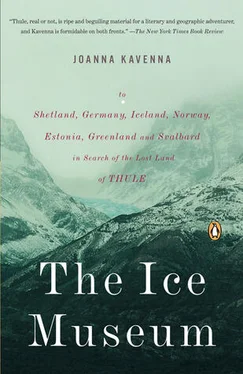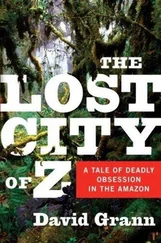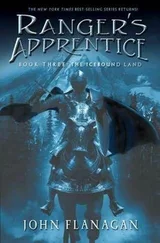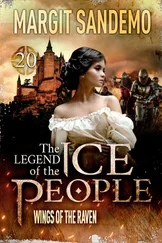The whir of the engines changed pitch, and we were descending towards the archipelago of Svalbard. Svalbard was a Norwegian colony, once called Spitsbergen, and it was a strange combination of worlds: it was a wilderness, everyone told me, but it was kept clean by tough edicts and restrictions, regulated, divided into national parks, maintained by a strict governor, a person placed by the Norwegian government, granted far-reaching powers to prohibit and restrict. It was my last stop on the Thule-trail, a trip to a place which mingled pragmatism with idealism, wilderness worship with the unsentimental use of resources. And Svalbard was where a colony of scientists fashioned theories about the coming earth, the future of the far north. From Svalbard, these scientists had tested the waters of the Arctic Ocean, and suggested that the physical composition of the ice might be changing. They had predicted the melting of the frozen sea.
Under a soft and tentative dawn, the land of Svalbard emerges below. A landscape of ice and rock, rising from a white sea. Zebra-striped with snow, the mountains are a succession of sharp ridges and dark crevasses, with clouds swirling around their peaks. Further inland, the mountains are flat at their highest points, their slopes like immense ladders, layered with sandstone and slate.
The plane loses pace across the runway, another slender Arctic runway perched on a patch of flat land. When the doors open, the wind blasts into the cabin, rustling the magazines and newspapers. There’s no bus, no arrival gate; I step down from the plane and walk into the silence of the valley.
Svalbard is a grandiose and barren place; the mountains like vast crumbling sphinxes covered with patched blankets, their folds falling heavily to the valley floor. The glaciers rise into blank blue walls, spilling ice into the sea. Rock and ice mingle in a two-tone frieze, the granite dark against the whiteness. Seals bask on the icebergs. The sun casts an orange glow across the sea. There is a broad valley that stretches for miles, and reindeer graze in the far distance. Kittiwakes and guillemots gather on the cliff tops, screeching and crying. The dappled patterns of the mountains emerge above the line of the mist, bright against the clouds, their slopes streaked with ice.
The houses of Longyearbyen look out across the fjord, and the fjord is as smooth as a sheet of glass. Across its smoothness show the reflected forms of the mountains. Longyearbyen was created as a coal town in the early years of the twentieth century, and the skeletal shapes of mining equipment are still scattered on the mountainsides. A small graveyard lies outside the town, its crosses coated with ice. I walk along Longyearbyen’s main street, past the bright orange and yellow rows of houses. A polar bear skin has been slung over a balcony, claws drooping towards the street. Reindeer shamble through the streets, grazing on the brittle grasses at the edge of the roads. The few tourists sit in the pizza restaurant, eating whale-meat pizzas; they wander into the shops selling piles of seal fur; they flock past the skins and antlers, the mournful stuffed bears and foxes; they stand in the street, watching the evening fall slowly across the mountains.
In Longyearbyen, I watched the sun shining across the water and I thought about the Ancients and Vikings and poets talking and toasting the dream of Thule. Permanently squabbling, locked in a dispute across the centuries. None of the classical geographers had been to Svalbard, none of the poets or philosophers. The Vikings might have come here, but it was uncertain: there were Viking reports of a land called Svalbard—meaning cold coast—discovered in the last years of the twelfth century. This was why the Norwegians had renamed the islands Svalbard, though they had earlier been called Spitsbergen.
At three in the afternoon everything was blurred by dusk, and the shadows crept out from under the buildings. At the hotel the tourists filed to their rooms, where the curtains were flung open. The hotel was a mock hunting lodge, a place of wooden ceilings in pale pine planks, one more stuffed polar bear standing in reception, with the evening’s luggage stacked around him. The windows of the Nansen dining room faced towards the shore, where the ragged rocks fell into the fjord. There was an antic feeling to the hotel: in the Nansen dining room the guests were pushing fish steaks around their plates, drinking slugs of Nansen cognac, having just stepped off a cruise ship called the Fridtjof Nansen . Nansen had been here at the end of his attempt on the North Pole, after surviving a winter in the ice. He came to Svalbard and found it was changing fast—that was in 1896, after a steamship had started coming to the place, bringing visitors. Even Svalbard, he had muttered, has become a tourist colony. He had watched the tourists at the Svalbard Post Office. Now Nansen was a brand in Svalbard, a label attached to the wilderness experience. He was smiling and waving, beckoning everyone through the entrance gates, turning his mournful eyes towards them.
It was a land a little like Thule, standing before the ice ocean, at the edge of the world. Glaciers covered two-thirds of the land, but the Gulf Stream made the archipelago milder than most places at 80° N, and the summers were sometimes nearly warm. Svalbard had most of the elements of Thule—the midday darkness of the winter, the midnight sun of the summers, the frozen ocean lurking off its coast. The inhabitants lived in their perfect small settlement of Longyearbyen, where there was no crime, where the only menace came from the Arctic winter, the freezing fjords and the sudden storms.
They all wanted to welcome me into the church, the devout adherence to the rules, so I walked with a few trekkers along the valley, and camped under the glacier. We walked in silence, staring at the thick turrets of stone, carved and smashed at their heights. The mountains were like cathedrals—baroquely patterned, with great stone ramparts and intricate friezes carved in the rock. The snow was stacked into the crevasses, shining on the slopes. There were mountains like shards of ice on these islands, rising into vicious peaks, but the mountains around me had been smoothed by the weight of glaciers during the last Ice Age.
It was dark at the camp so we lit a fire, the orange flames gaudy against the night. The crackling of wood and the whining of dogs were the only sounds. Everyone was cold, and the frigid air kept me awake through the night. I felt the blasts of the wind through the holes in the tent; the chill swirled into my sleeping bag. The sledge dogs whined, the temperature slumped, and the wind wailed around the tent. We had guns stacked by the entrance, in case a polar bear shambled into the camp. But nothing disturbed the night, except the dogs dragging at their chains and kicking up dust. The only presence was the icy breath of the cold, sidling up to me, curling itself around me. I shivered, I listened to the rhythmic sounds of breathing, and then I gave up on sleep and dragged the sleeping bag out of the tent, towards the smouldering remains of the campfire. There was a small patch of warm air directly around the wood, and I huddled towards it. Sitting up, propped against a pile of food bags, I watched the fire dwindle, listening to the silence of the valley. After a few hours even the dogs were quiet, heads into their fur, coiled onto the rocks.
The darkness lingered long into the day, and we cooked up porridge on a campfire, huddling at the edges of the flames, trying to stay warm. The others were all silent in their windproof jackets, watching the flames crackle through the wood. Later we walked slowly along the ice, sliding on the rocks, carrying something like a packed lunch. The sun was low in the sky, dwindling quickly, turning the sludge sea orange. It was hard to get a good look at the other people because the light was always fading, casting shadows across their faces. Some of them were new recruits to the wilderness; they had wanted this for years, the silence, the frigid blasting wind. They were the ones with a spring to their step, bouncing across the rocks like children, picking up ancient fossils, ice-smashed bits of basalt.
Читать дальше












